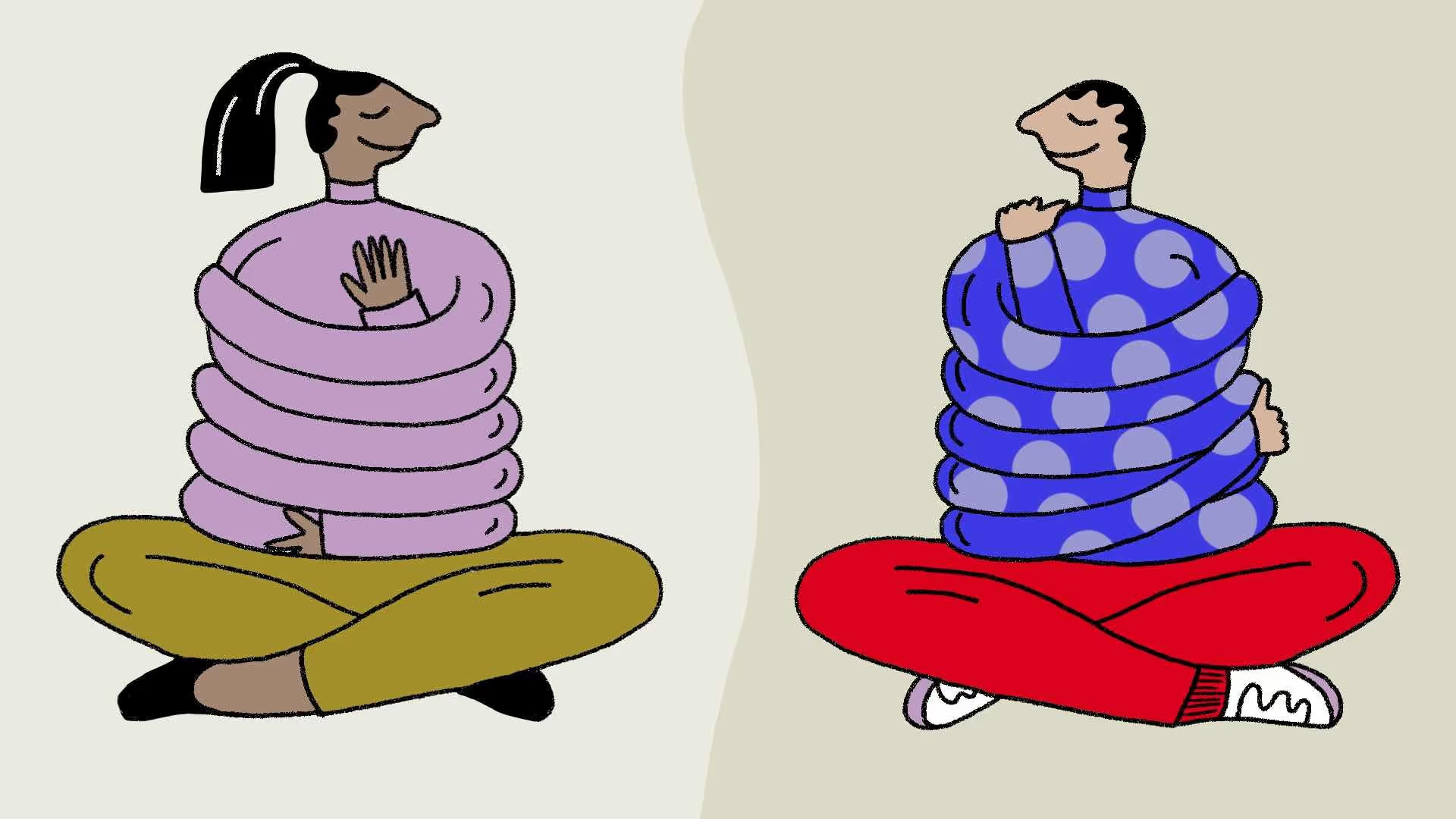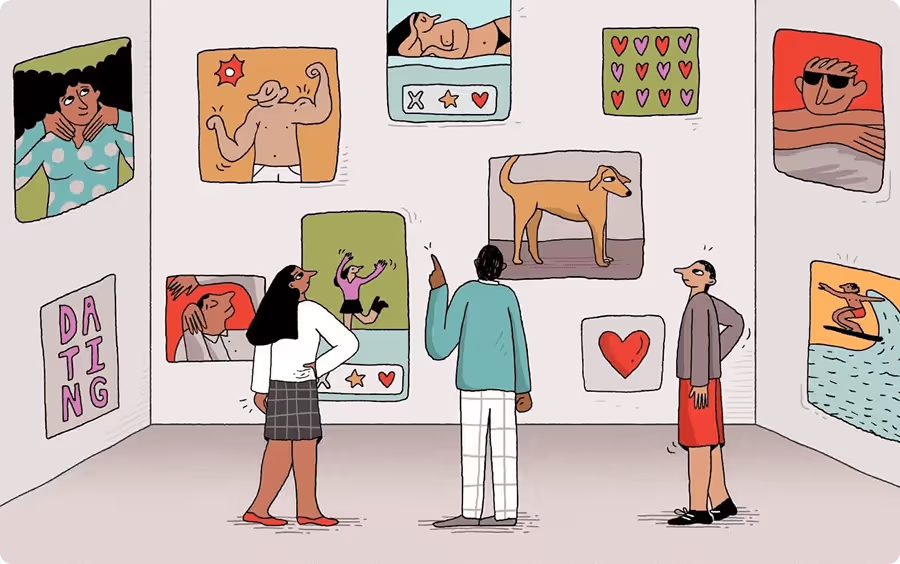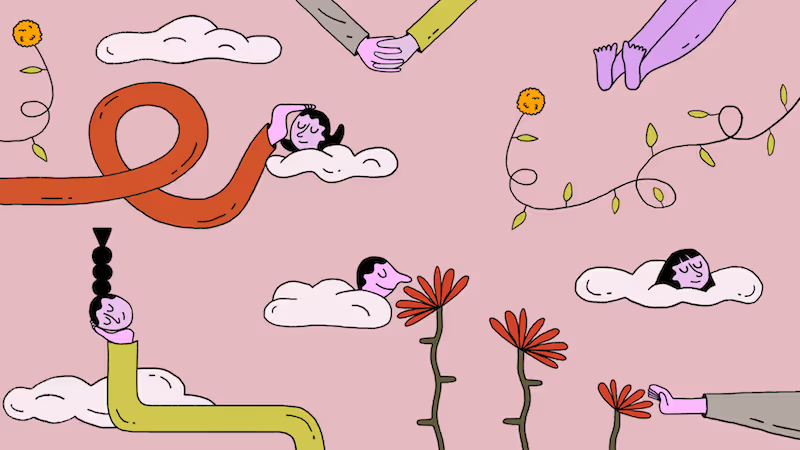We can live without sex, but we can't live without touch. When we are not touched, we become irritable, aggressive, dysregulated, and depressed. We need touch to feel safe and to establish secure attachment. We need touch because it signals trust and connection. We need touch because it soothes and is pleasurable.
Pause for a moment. As you read that, did you immediately think of the touches you’ve shared with another person? Read it again now and think about the sense of touch you share with yourself.
In the last twenty years—as we’ve transitioned to often connecting more with people online than in person—have you felt a sense of touch hunger?
In the last year—as connection with a stranger has gone from an opportunity for spontaneous engagement to an opportunity for spontaneous contamination—has that touch-hunger become touch-starvation? For the foreseeable future, sharing touch with others comes with side-effects: danger, paranoia, frustration when we accidentally trespass our new regulations, and defiance if and when we make our own rules. But one of the hardest side-effects has been loneliness, especially in the moments when we’ve needed touch the most.
Nothing can replace holding a loved one’s hand, a tight hug with an old friend, a first kiss, or sitting next to a kind stranger. But this period of distance from others has given us an opportunity to explore a type of physical intimacy we often neglect: that which lives inside of us. Not only can self-touch help us through this moment, it can have lasting effects on the relationship we have with ourselves. Self-touch, whether through massage, masturbation, or tuning in to the way the elements feel on our skin, has always been about self-soothing. These days, it has also become our safest and most powerful tool for self-care.
The Human Need for Touch
In the beginning of life, touch is the first sense that we develop. As babies, we suck our thumbs, twirl our hair, and clutch a blankie. We seek softness because we like the way it feels on our skin. Each of these self-touches are a baby’s search for self-soothing when skin-to-skin contact with another isn’t available. In these moments, we learn to calm ourselves, lower our heart rate and cortisol levels, and to release oxytocin. A baby doesn’t know the science, but is unmistaken for what feels good and what feels bad. That dynamic follows us into adulthood. We know what we like and don’t like even when we don’t have the words for it. That’s because touch itself is a language, our first one, and it’s comprised of an intimate vocabulary that includes pain and pleasure.
When someone touches us and we recoil under their fingertips, we’re communicating that we’re uncomfortable. When someone touches us and our muscles relax, we’re saying “I feel good. I feel safe.” The same goes for when we touch ourselves. When we give ourselves a warm touch, gently rubbing our belly or scratching our head, we calm our cardiovascular stress and activate the body's Vagus nerve. This is intimately involved with our compassionate response—both giving and receiving, to others and to ourselves. So when we touch ourselves kindly, we’re communicating tenderness and care to our whole body. When we smack our palm to our forehead upon realizing a mistake, we’re saying “I messed up.” When we masturbate, we’re reminding ourselves that we deserve to feel good, to relax, to be turned on, to take time for our own pleasure.
Our Sense of Touch Develops in a World of Mixed Messages
When we think of touch as a language, we can go deeper than good versus bad touch, touch that gets green light or red light. We can also look at the societal, cultural, and interpersonal messages that inform the language of touch. We grow up and live in a world of mixed messages about physical touch, and particularly self-touch.
The fundamental physiological, emotional, and psychological reasons for touch evolve as we do, but we learn to suppress the need. In the western world as we enter school-age, we’re told that masturbation, a natural self-soothing practice, is a no-no. In junior high, Sex-Ed tends to focus on penetrative sex or no sex at all, cutting out the wide range of options in between or with oneself. The concept of pleasure doesn’t even enter the equation. By the time young Americans begin sexual activity, the vast language of touch—what sexologist Jaiya breaks down as affectionate touch, healing touch, sexual touch, and erotic touch—has been collapsed into one big NO.
It’s not just sex-ed. From our teenage years into adulthood, our dominant sexual model focuses so much on orgasm that many of us, when we don’t want to engage in the full production, block off the basic pleasures of touch altogether. This dynamic often manifests as a disengagement from the self-soothing tools with which we are born. The body begins to forget how natural and good it feels to take care of itself. We forget the power we have to make ourselves feel valued, satisfied, worthy—even loved. Unfortunately, certain sectors of society count on this, and not just to sell beauty and wellness products.
Reclaiming Our Sense of Touch is a Radical Act
For all of human history, cultures have used the body as a vessel for social control. At a very basic level, our internalization of negative messages about our bodies—and prohibitive instructions surrounding our agency—block our ability to turn to ourselves for a sense of well-being. This is particularly so for peoples whose boundaries have been infringed upon and violated, those whose bodies have been radically changed by illness, and those for whom society’s biased standards reinforce unworthiness and shame.
Perpetuating the idea that pleasure, acceptance, value, and care can only come from an external source keeps us dependent on people, companies, governments, and systems—not to mention loads of products—that don’t serve us. When we take our pleasure into our own hands, so to speak, we’re expanding the language of touch to include a declaration best explained by self-described “black, lesbian, mother, warrior, poet” Audre Lorde. “Caring for myself is not self-indulgence. It is self-preservation, and that is an act of political warfare.”
One such example is the work of Rafaella Fiallo and Dalychia Saah, the pleasure advocates, educators, social workers, and creators behind Afrosexology. Their vision for a liberated Black sexuality “is that reclaiming and having agency over our bodies will transfer to other aspects of our lives and incite us to reclaim political, economic, and social agency.”
Go Ahead and Touch Yourself
It’s time. Turn the computer off. Put your phone out of reach. Declare to whomever that you’re taking time for yourself.
Find five objects that you might love to touch. Maybe it’s a silk scarf, a stress ball, a leather-bound book, a body oil, or a new favorite: slime (to play with). Try to describe exactly how each of these objects feel on your skin and what makes the sensation pleasurable.
Now that you’ve tuned into how something else feels on your skin, explore how your own hands feel. Experiment with different touch: fast and slow, shallow and deep, circular and linear, back of palm, front of palm. Reverse your palm up and use your index finger to trace a path from the tip of your middle finger to the crease of your elbow, with a slow—even slower—circular motion. What is the slowest you can go until you reach your elbow? If you do this with your eyes closed, you’ll think you’re there long before you are. See how many tries it takes to accurately sense it.
As you engage in these exercises, think about the places on your face and body you never touch. Explore them. Take note of how, when you touch yourself, you’re giving and receiving at the same time. How does hedonic contact with yourself make you feel?






.svg)





